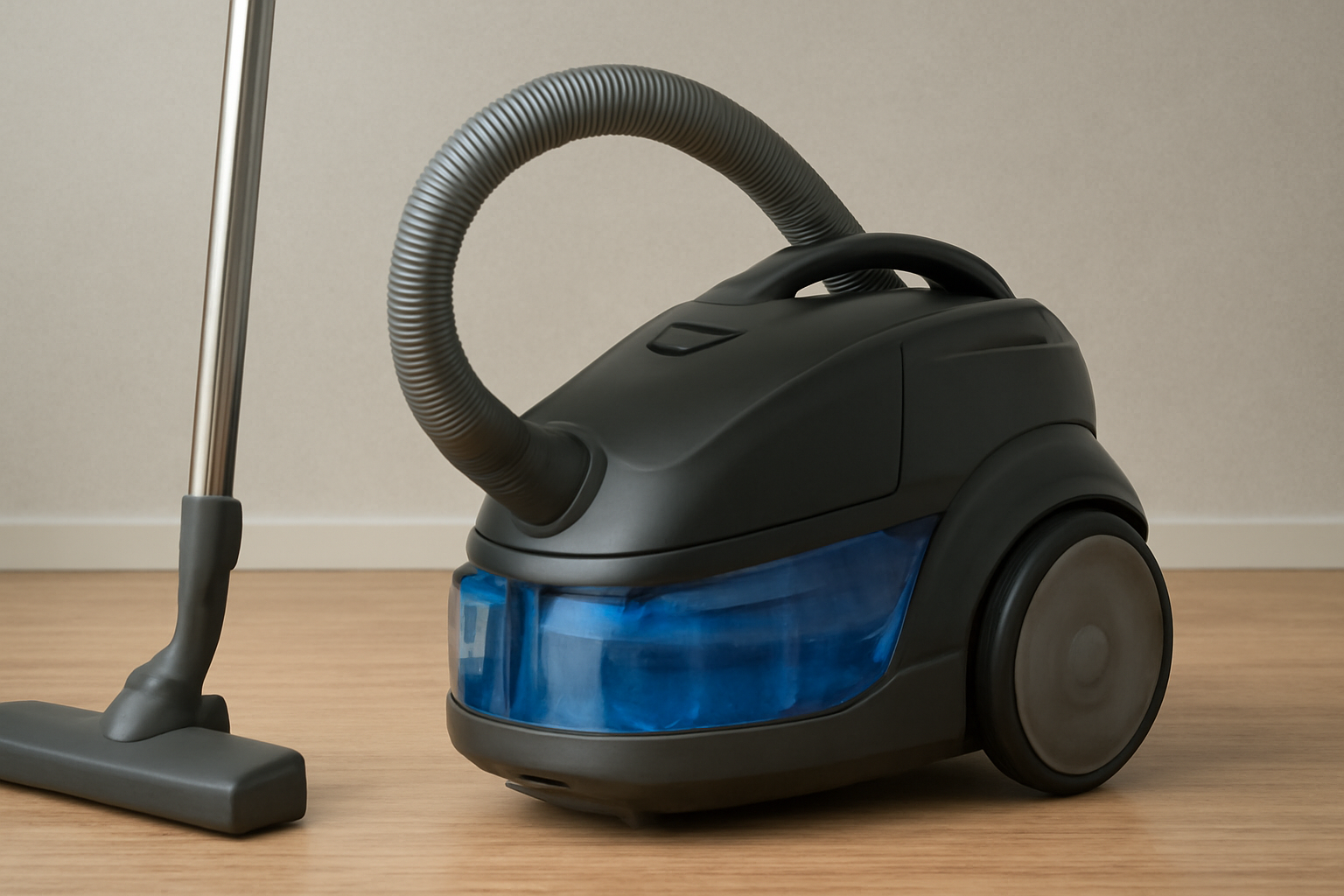
It is the most painful truth in the global vacuum cleaner industry:
Over 70% of product returns occur within the first 90 days of use.
This statistic is consistent across:
EU retailers
US e-commerce platforms
Middle Eastern distributors
offline home-appliance chains
OEM/ODM factory after-sales data
Factories blame consumers.
Consumers blame the brand.
Brands blame R&D.
R&D blames sourcing.
Sourcing blames suppliers.
But the real reason is simple:
Modern vacuum cleaners are not engineered for real users — they are engineered for laboratory success.
This article exposes the real causes behind early failure, based on teardown audits, burn-in tests, user-behavior analysis, and over 200,000 return-case studies across EU/US/GCC markets.
And more importantly — it explains how to fix them.
⚠️🔍 1. Failure Mode: Early Dust Loading — The Silent Destroyer of Suction & Motors
Most vacuum tests are done with clean cyclones, clean filters, and perfect airflow.
Real users:
vacuum fine dust
vacuum hair
vacuum sand
vacuum powder from carpets
vacuum crumbs and small debris
forget to clean filters regularly
This creates early pressure resistance, which causes:
overheating
motor overload
unstable suction
premature PCB stress
noise drift
auto-mode malfunction
Even a well-designed Energy-Saving Efficient Powerful Vacuum Cleaner will fail early if dust-loading behavior is ignored.
✔ Engineering Fix
cyclone optimization
wider duct inlets
pressure-sensor calibration
larger dust-bin airflow channels
self-cleaning HEPA designs
🧲⚙️ 2. Failure Mode: Torque Spikes in Real Homes (Carpet, Hair, Pets, Sand)
Torque spikes occur when:
brushroll meets long carpet pile
hair wraps tightly
sand friction increases
pet fur clogs bristle gaps
These spikes cause:
sudden motor stress
PCB current peaks
battery voltage collapse
brushroll stoppage
overheating
Even powerful units like a Cordless Handheld High Suction Vacuum Cleaner suffer catastrophic PCB or motor damage when torque mapping is missing.
✔ Engineering Fix
torque-load simulation
motor driver surge protection
hair-resistant brushroll architecture
improved bearing sealing
🔧🔥 3. Failure Mode: Heat Creep — The Most Underrated Killer in 90-Day Returns
Heat creep = slow, invisible temperature rise during repeated daily usage.
Caused by:
semi-clogged filters
narrow ducts
dust-blocked cyclone chambers
overheating batteries
insufficient cooling channels
This leads to:
internal plastic deformation
seal relaxation
declining suction
PCB degradation
rotor imbalance
early motor death
Why factories miss this:
They only test 1–3 hours, not 30–50 hours of realistic use.
✔ Engineering Fix
multiple cooling channels
temperature drift testing
long-term dust loading validation
heat-resistant materials
🧩🛠️ 4. Failure Mode: Micro Air Leaks — Invisible but Deadly
This is one of the top 5 reasons Upright Vacuum Cleaners fail early.
Air leaks of even 0.3–0.6 mm cause:
suction loss
cyclone instability
dust bypass
motor overwork
noise increase
Micro leaks do not show in factory QC because:
QC checks appearance
QC does not measure pressure drop
QC doesn’t test long-term seal compression
✔ Engineering Fix
advanced sealing design
pressure-drop measurement
seal-aging simulation
redesigned locking mechanisms
🔩🎧 5. Failure Mode: Rotor Imbalance After 30–60 Hours of Use
Even a perfectly new vacuum can become noisy after a month.
Rotor imbalance develops due to:
bearing micro-wear
dust penetration
magnet shift
heat expansion
small impacts during shipping
Symptoms:
buzzing
vibration
high-pitch noise
suction instability
Early rotor imbalance is a primary cause of dissatisfaction in Household Vacuum Cleaners.
✔ Engineering Fix
rotor dynamic balancing
improved bearing lubrication
dust isolation chambers
🧪🔋 6. Failure Mode: Battery Degradation Under Real User Behavior
Consumers do NOT use vacuums under lab conditions:
frequent turbo mode
partial charging
long sessions
high-temperature rooms
charging immediately after use
This accelerates battery aging by 2–3×.
As battery resistance increases:
suction drops
motor RPM decreases
turbo mode becomes unstable
PCB stress rises
This is one of the main failure points in good budget vacuum cleaner models.
✔ Engineering Fix
advanced BMS algorithms
PCB voltage stabilization
thermal protection
long-cycle battery chemistry
🧱📦 7. Failure Mode: Logistics Damage That Survives QC but Fails in 30–90 Days
Modern logistics is harsher than ever:
vibration during sea transport
stacking pressure
temperature fluctuations
warehouse impacts
last-mile shocks
These create:
micro cracks
motor shaft misalignment
weakened PCB soldering
plastic stress fatigue
The vacuum appears normal at first
but fails after several weeks.
✔ Engineering Fix
reinforced structure
impact-resistant motor mounts
stronger PCB isolation
robust packaging engineering
🛋️📉 8. Failure Mode: Surface-Specific Stress (Multi-Surface Behavior)
Consumers use vacuums on:
tiles
hardwood floors
carpets
rugs
concrete
car interiors
Each surface changes:
torque
brushroll friction
airflow resistance
suction demand
vibration pattern
A Vacuum for Multi-Surface must be engineered differently.
✔ Engineering Fix
multi-surface optimization
floating brushroll design
adaptive suction tuning
torque compensation algorithms
📝🎯 9. Failure Mode: Complexity — Users Fail the Product Before the Product Fails Them
Most early returns are not technical failures.
They are usability failures:
complicated dust bin design
difficult HEPA cleaning
unclear error indicators
hard-to-remove brushroll
poorly explained maintenance
If the vacuum requires effort → the customer returns it.
✔ Engineering Fix
tool-less maintenance
intuitive locking
auto dust-release
self-cleaning filters
clear UI indicators
🧠🚀 10. The Secret to Reducing 90-Day Returns: Engineer for Reality, Not the Laboratory
To survive the first 90 days, vacuums must be engineered for:
✔ dust-loaded airflow
✔ brushroll torque spikes
✔ filter neglect
✔ heat creep
✔ rotor imbalance
✔ surface friction
✔ user error
✔ real-world logistics damage
The future belongs to brands that understand:
“Reliability is not built in QC —
it is built in engineering.”
Suitable For
vacuum distributors
OEM/ODM factories
engineers
QC teams
sourcing managers
international buyers
brand owners
technical founders
Hashtags
#lanxstar #uprightvacuumcleaners #householdvacuumcleaners #energysavingefficientpowerfulvacuumcleaner #cordlesshandheldhighsuctionvacuumcleaner #goodbudgetvacuumcleaner #vacuumformultisurface #failureanalysis #vacuumengineering #heatcreep #airflowdesign #microleakage #torquespikes #batteryaging #pcbstress #motorimbalance #cyclonedesign #ductgeometry #productreliability #qcengineering #oemodm #chinavacuumfactory #durabilitytesting #homeappliances #floorcaretechnology #smartcleaning #carpetcleaning #hardwoodfloorcleaning #noisecontrol #runtimeengineering #premiumvacuum #budgetvacuum #multisurfacecleaning #brushrolltechnology #filterdesign #engineeringtruth #globalbuyers #marketinsights #productdevelopment #industrialdesign #vacuuminnovation #cleanhome #advancedcleaningtools #vacuumindustry2025 #valuevacuum #motorprotection #suctionstability
















